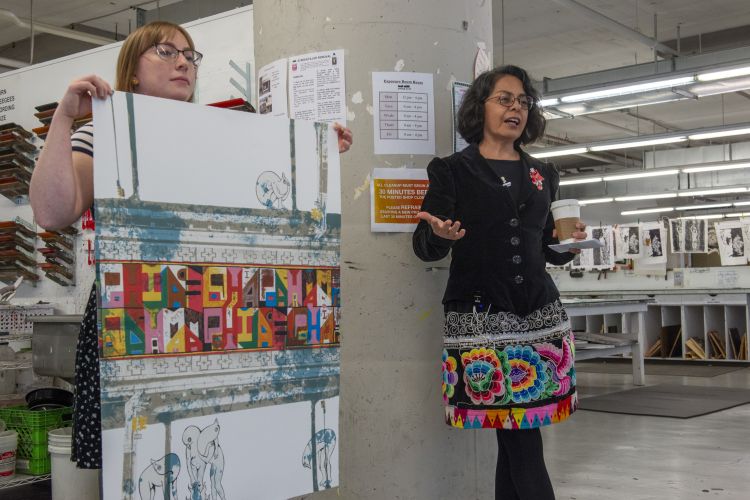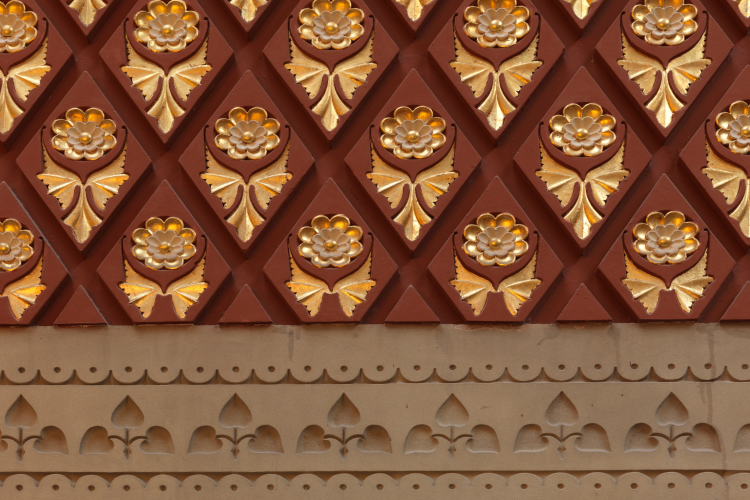STORIES FROM PAFA
Rhoden in the World: Public Works
John Rhoden's enduring legacy lies in his notable public sculptures, such as the Frederick Douglass statue at Lincoln University and the Reverend Fred Shuttlesworth bust at the Birmingham Civil Rights Institute, inviting reflection on civil rights, historical remembrance, and cultural unity.
In Brooklyn Heights, John and Richanda Rhoden reside at 23 Cranberry Street. The story of their lives and art and love unfolds within the walls of their meticulously renovated dwelling. Once a public garage and a firehouse, the 8,000-square-foot space became a hub of creativity, attracting visitors and admirers alike. This artistic haven became an embodiment of the Rhodens' shared vision, blending life and studio seamlessly.
Amidst the ongoing renovations, John Rhoden sustained a career working out of a home studio and was largely financially supported by his work in education, including four decades with the New York Board of Education, and by public art commissions. He completed sculptures for Harlem Hospital (A Happy Family Is the Core of a Healthy Community); Metropolitan Hospital (Monumental Abstraction, sometimes listed as Oriel [Window to the Mind]), both of which were unveiled in 1972; and Bellevue Hospital (Mitochondria), unveiled in 1972, in New York.
Frederick Douglass at Lincoln University, 1989
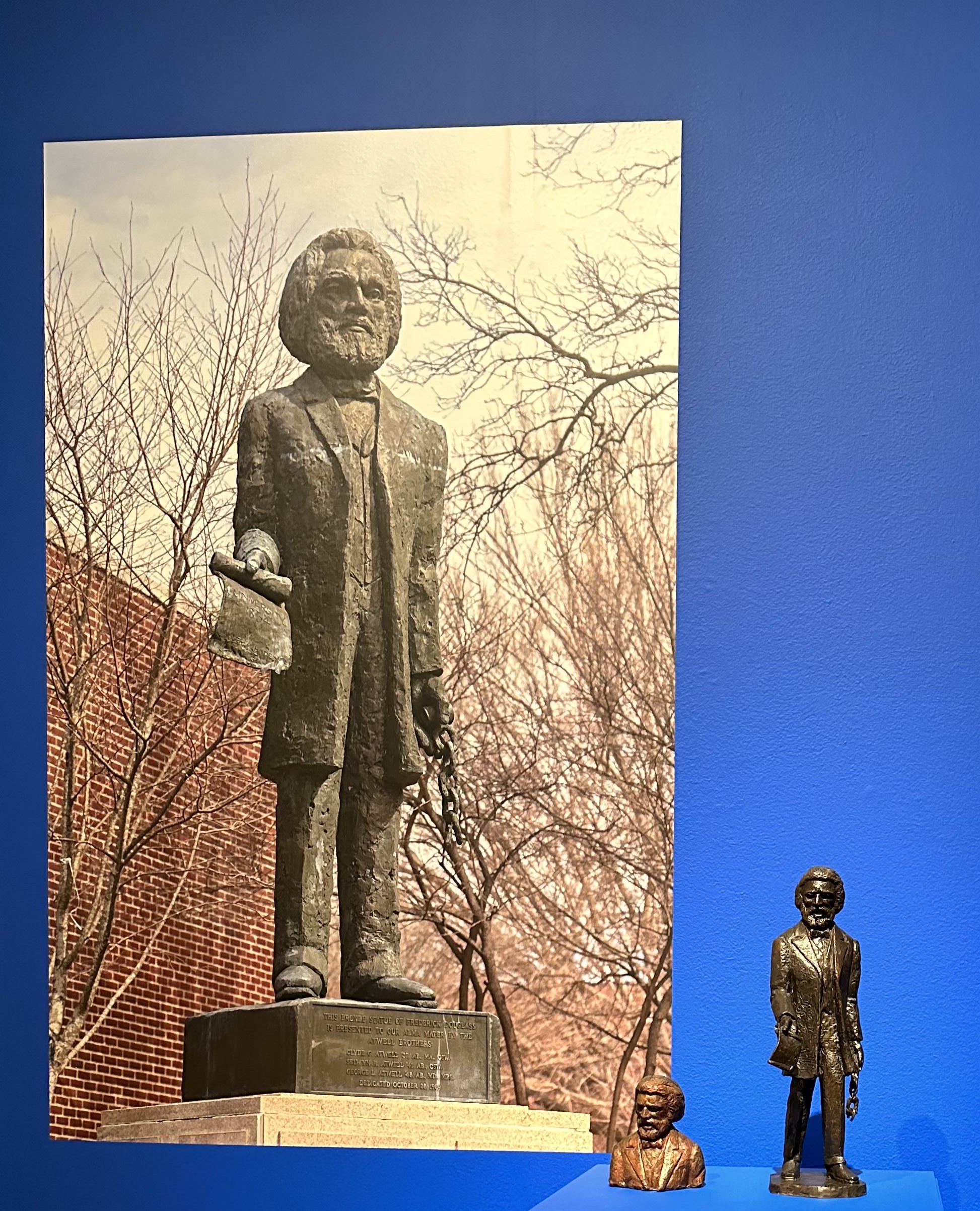
Maquette for Frederick Douglass, 1979, Bronze. Pennsylvania Academy of the Fine Arts, The John Walter Rhoden and Richanda Phillips Rhoden Collection, 2019.27.10; Frederick Douglass at Lincoln University, Chester County, PA, photo © Sahar Coston-Hardy/Esto.
One of Rhoden's notable public works is the statue of Frederick Douglass at Lincoln University in Chester County, Pennsylvania. The maquette for this powerful sculpture, crafted in 1979, captures Douglass mid-stride, holding a metal shackle and a document bearing the founding year of the university. Unveiled in 1989 at Lincoln University, the statue stands as a testament to the university's commitment to its historical roots and the enduring spirit of Frederick Douglass.
 | 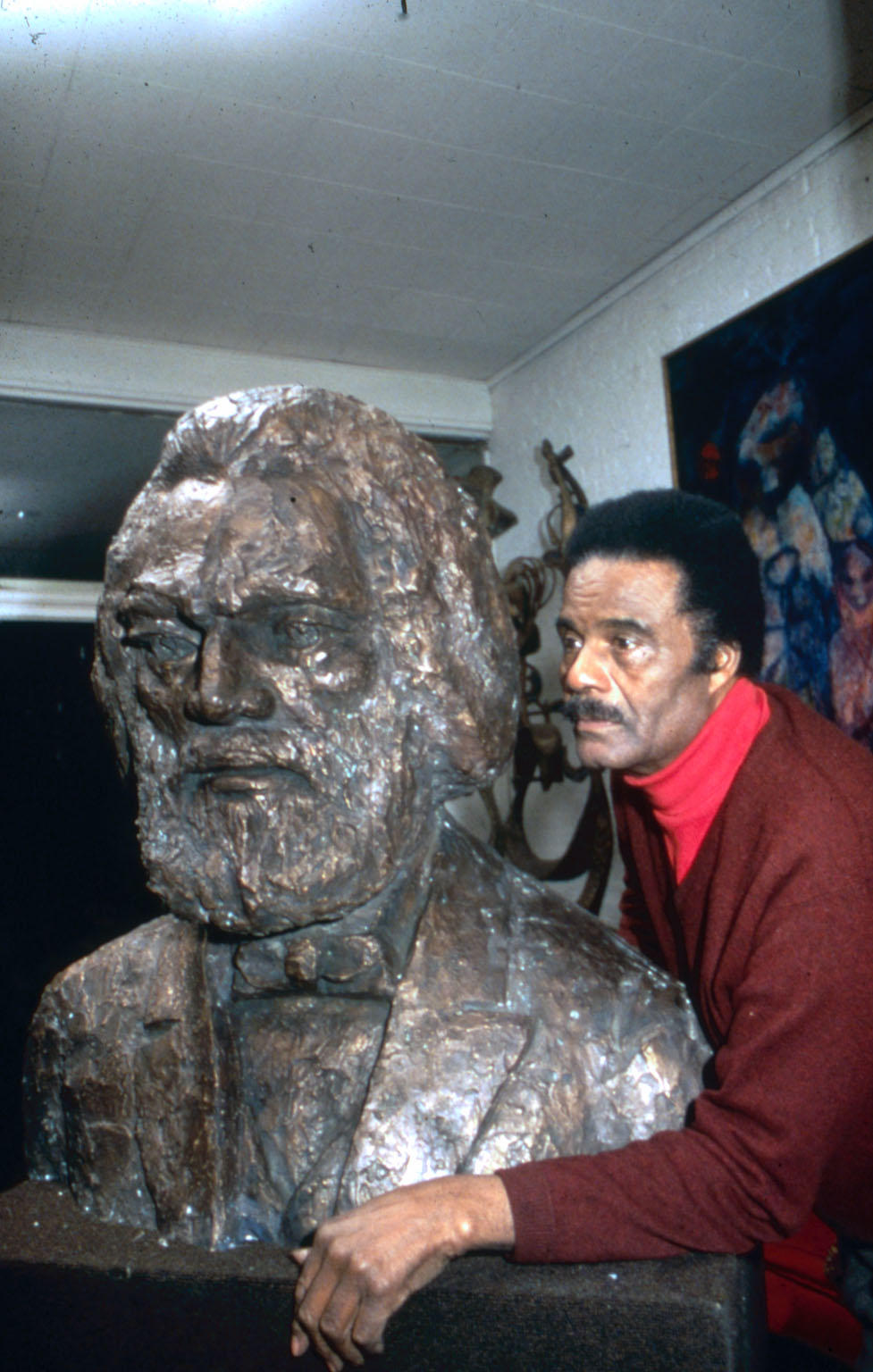 |
Black and white photograph of John Rhoden posing with his sculpture of Frederick Douglass, undated. John Rhoden papers, Rhoden-JR044_2.
Color slide of John Rhoden with his bust of Frederick Douglass in 1994, 1994. John Rhoden papers, MS.2019.01.4142.
Bust of Rev. Fred Shuttlesworth at Birmingham Civil Rights Institute, 1991–1992
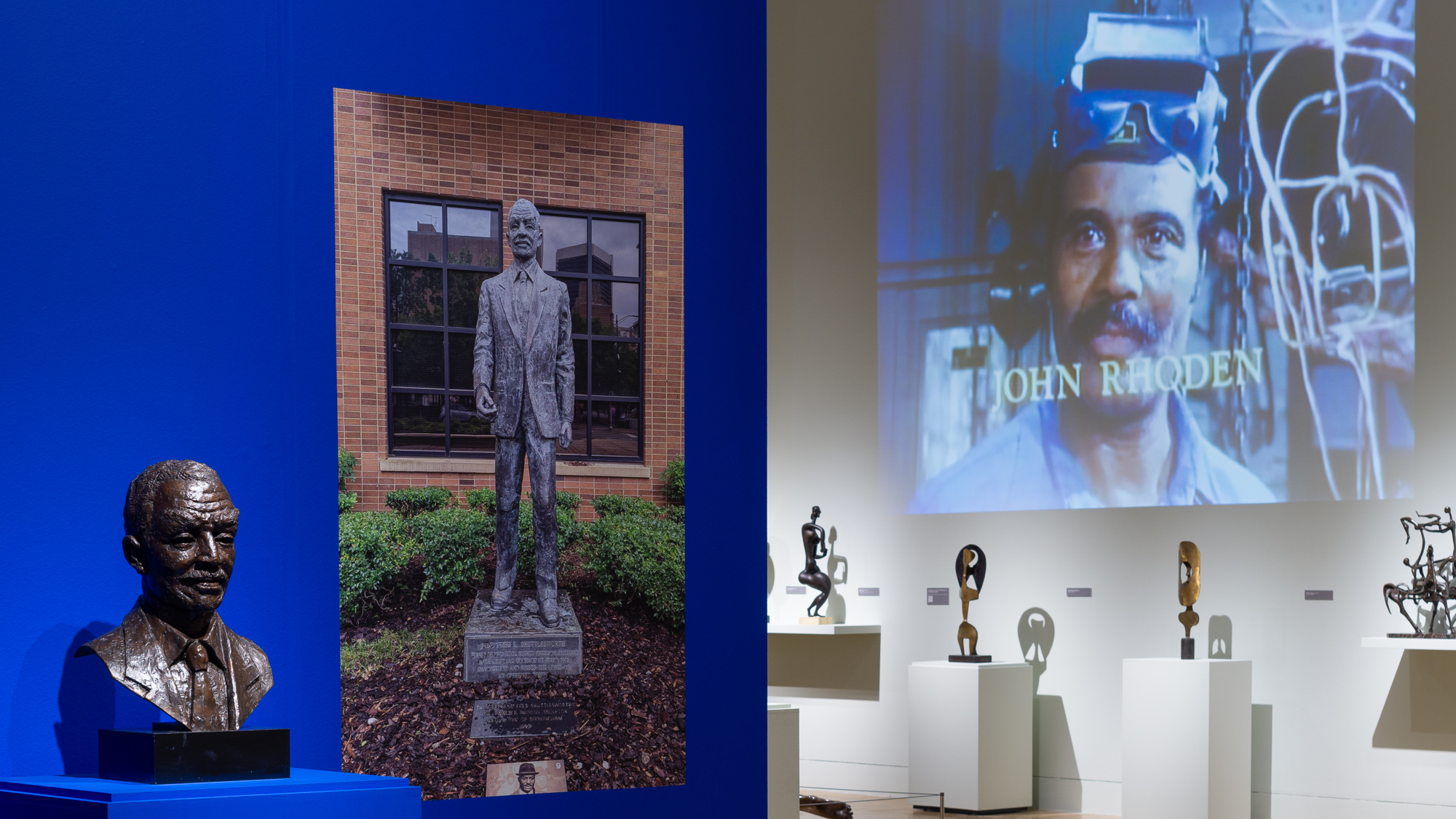
Bust of Rev. Fred Shuttlesworth, 1991–1992, Bronze. Requested by the Birmingham Civil Rights Institute, Birmingham Alabama, JR076; Photo: Rev. Fred Shuttlesworth, 1992, Bronze. Birmingham Civil Rights Institute; Determined To Be: The Sculpture of John Rhoden, at the Pennsylvania Academy of the Fine Arts, October 5, 2023–April 7, 2024 in the Hamilton Building. Courtesy of PAFA. Photography by Adrian Cubillas.
Commissioned for the Birmingham Civil Rights Institute's opening in 1992, Rhoden sculpted Civil Rights activist and co-founder of the Southern Christian Leadership Conference, Reverend Fred Shuttlesworth. In preparation for the statue, Rhoden sent a letter to Reverend Shuttlesworth, writing “I am very excited about the sculpture and I need your help as I must have photos and videos of you during the 1960s Freedom Rides,” referencing the 1961 civil rights activist campaign to protest segregated interstate travel by riding buses. The statue stands tall, reaching out with his right hand. Placed strategically in downtown Birmingham, the sculpture oversees historic civil rights sites, a poignant reminder of the struggles and triumphs of the movement.
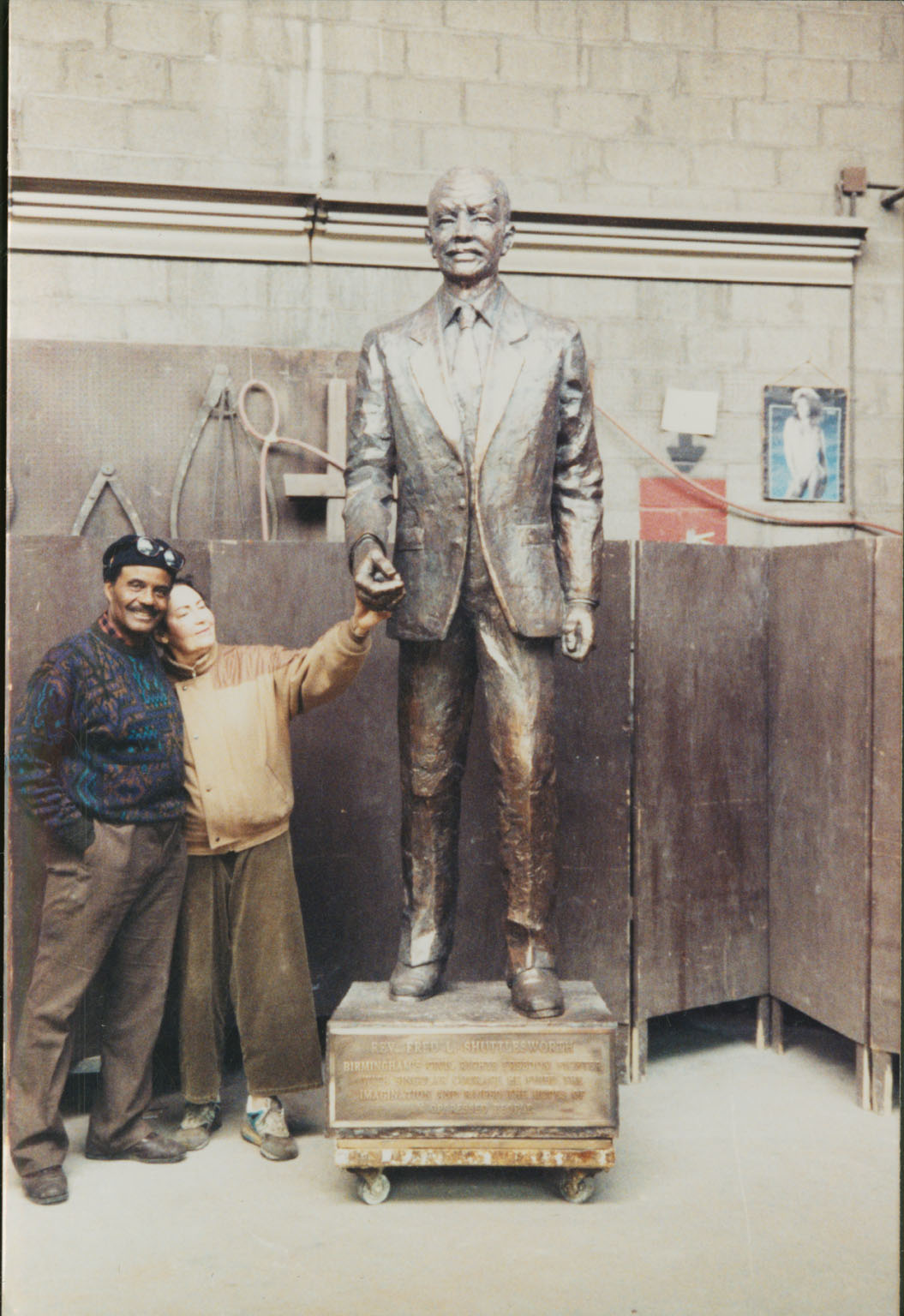 | 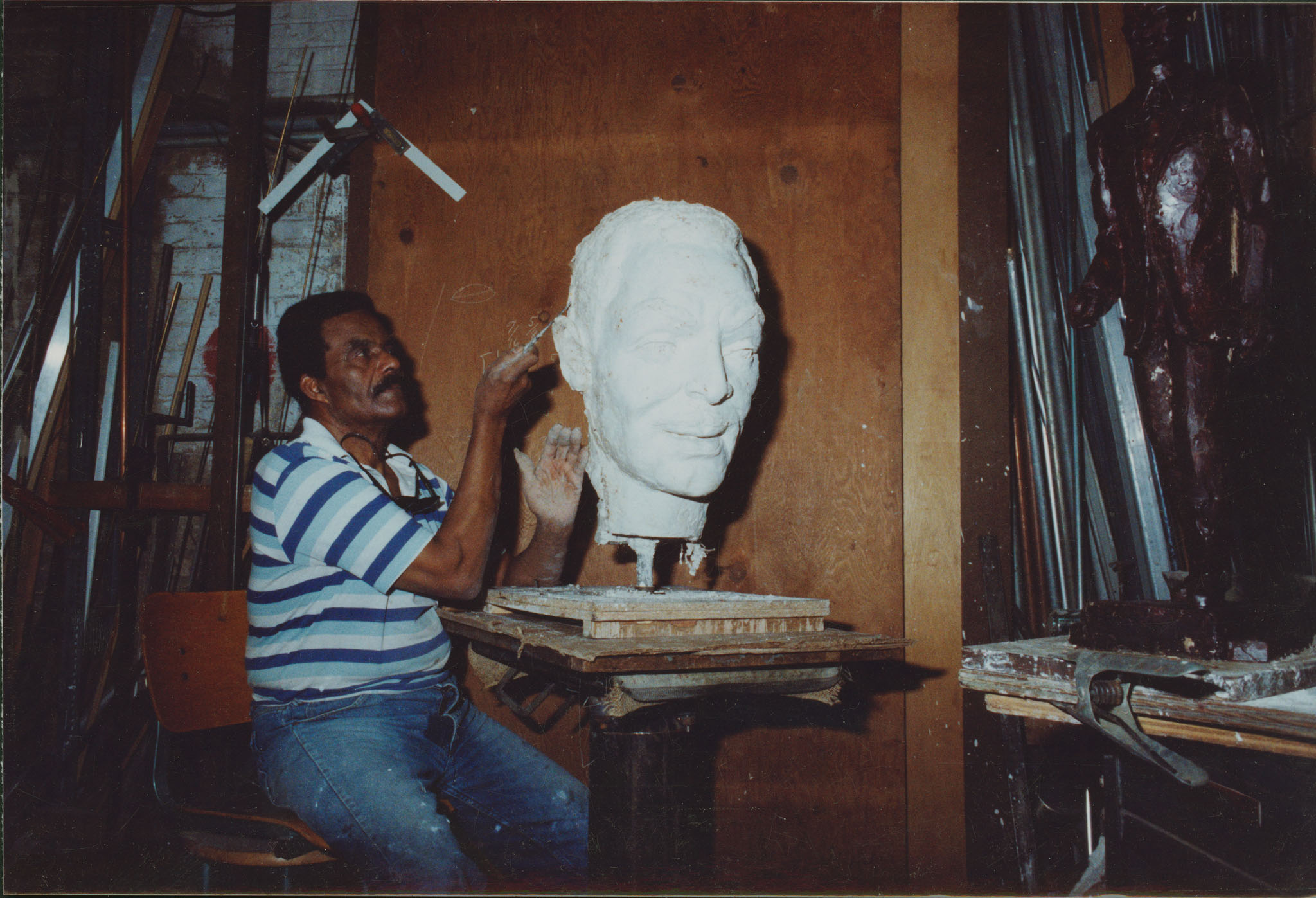 |  |
Color photograph John and Richenda Rhoden posing next to bronze sculpture of Fred Shuttlesworth, 1991-1992. John Rhoden papers, MS.2019.01.3092.
Color photograph of John Rhoden incising additional details on the right eye of the Fred Shuttlesworth commission in the Rhoden studio, 1991-1992. John Rhoden papers, MS.2019.01.3093.
Color photograph of Fred Shuttlesworth modeling for John Rhoden during a sculpting session, 1991-1992. John Rhoden papers, MS.2019.01.3088.
Nesaika, 1976

Maquette for Nesaika, ca. 1976, Bronze. Pennsylvania Academy of the Fine Arts, The John Walter Rhoden and Richanda Phillips Rhoden Collection, 2019.27.12; Nesaika, 1976. Bronze, 108 × 31 × 24 in. (274.3 ×78.7 × 61 cm). at the African American Museum in Philadelphia. Photo by Maxine Mendoza © 2008 for the Association for Public Art.
For the 1976 opening of the Afro-American Historical and Cultural Museum (now the African American Museum in Philadelphia), Rhoden sculpted "Nesaika.” Rhoden drew on his interest in figuration and abstraction as well as his decades of techniques honed by his travels around the world. Standing over nine feet tall, the bronze sculpture synthesizes influences from Rhoden's global travels, studies of African craftsmanship, and a celebration of unity.
The maquette for "Nesaika," a bronze sculpture measuring 108 inches in its final form, showcases Rhoden's intricate design process. Drawing inspiration from African craftsmanship, Native American art, and rock hieroglyphics, Rhoden weaves a narrative of unity and continuity through the ages.
 | 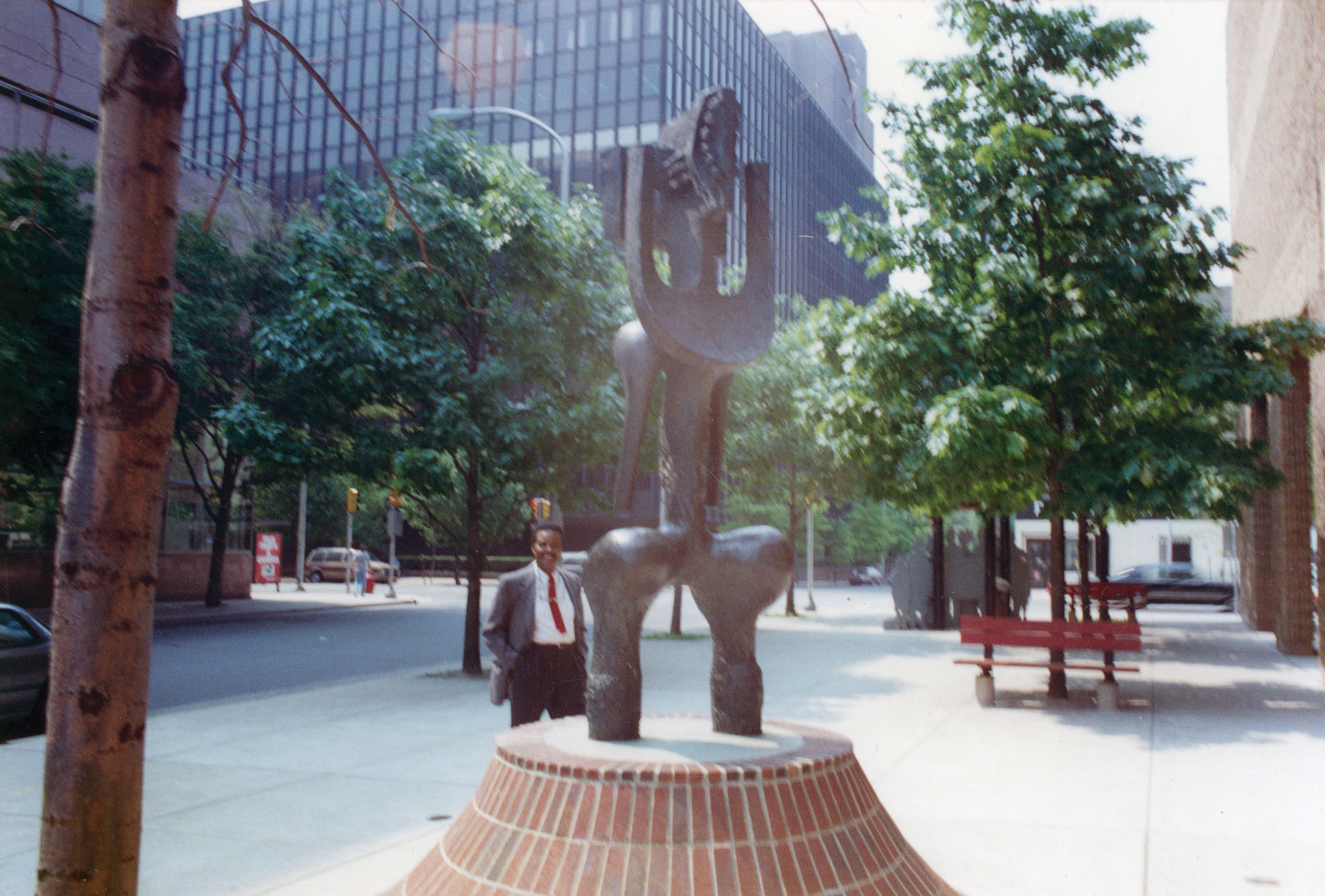 |
Black and white photograph from the installation of Nesaika, 1976. John Rhoden papers, MS.2019.01.0703.
Color photograph of John Rhoden posing beside his public art sculpture Nesaika installed in the front entrance of the Afro American Historical and Cultural Museum of Philadelphia, 1976. John Rhoden papers, MS.2019.01.4566.
John Rhoden's public art enriches physical landscapes and contributes to the ongoing dialogue of civil rights, historical remembrance, and cultural unity. As visitors engage with these sculptures, they become participants in a conversation that transcends time. John Rhoden’s legacy endures through his sculptures that invite us to reflect on our shared human experience.
Featured Image: Black and white photograph of John Rhoden working on Frederick Douglass, circa 1988-1991. John Rhoden papers, MS.2019.01.0708.
